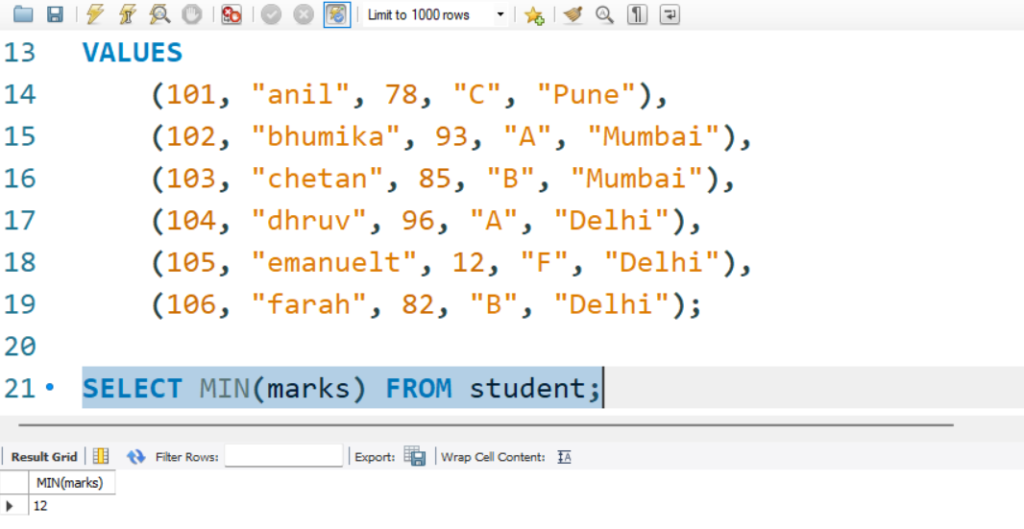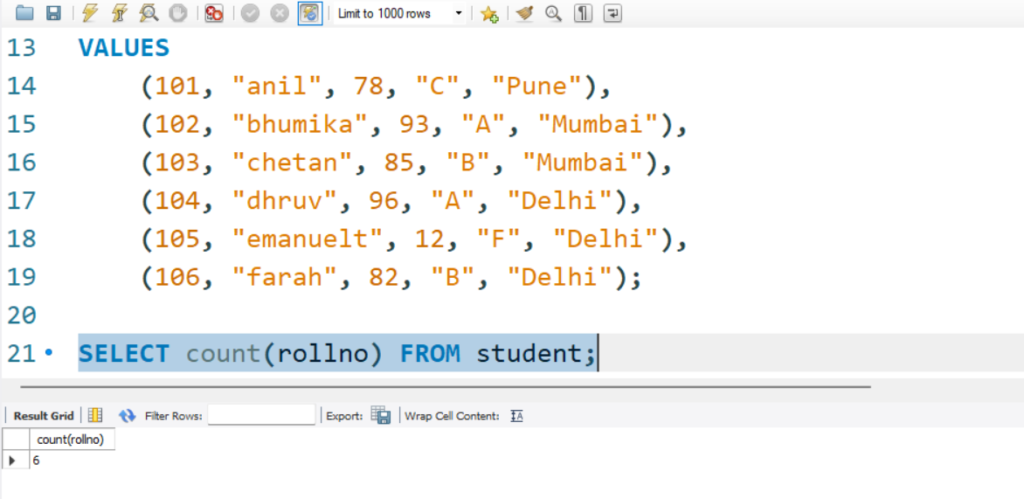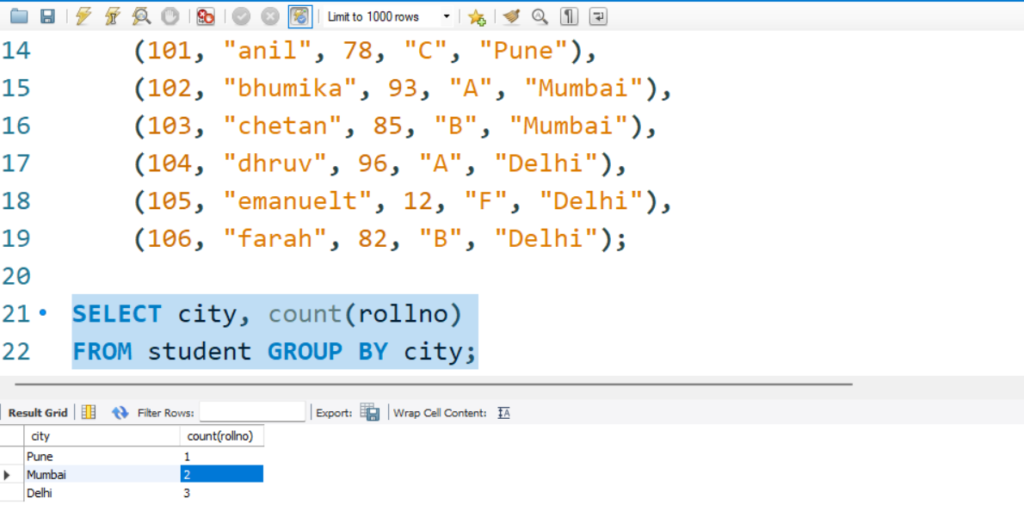Hello everyone, my name is Rishabh Deshpande. Today, we will explore SQL from the basics to advanced concepts in the simplest and easiest way. Let’s dive in!
What is Database and there types ?
A database is a structured collection of data that is stored and managed in a way that allows for easy access, retrieval, and manipulation. Think of it like a digital filing system where information is organized into tables, much like folders in a filing cabinet. Each table holds related data in rows (records) and columns (fields), making it easy to find and use the information you need. Databases are used in a wide range of applications, from websites and apps to business operations, to store everything from customer information to inventory details.
There are two types of database i.e relational and non relatinal types database
| Relational | Non-Relational |
|---|---|
| Use tables to store data in rows and columns | Designed for unstructured or semi-structured data. Includes document, key-value, column-family, and graph databases.(no-SQL) |
| ex: MySQL, PostgreSQL, Oracle, SQL Server | ex: MongoDB, Cassandra, Redis, CouchDB |
Note : We use SQL to work with relational DBMS
Let’s learn basic terminology about SQL
In this, we will learn about basic queries, datatype & SQL commands
we’ll see each every concept in easiest way. Let’s get started.
What is Datatype ?
A data type in SQL (Structured Query Language) is an attribute that specifies the type of data that can be stored in a column of a database table.
Data types help define the operations that can be performed on the data, how it is stored, and how it is retrieved. They are crucial for ensuring data integrity, optimizing storage, and improving query performance.
| DATATYPE | DESCRIPTION | USAGE |
|---|---|---|
| CHAR | string(0-255), can store characters of fixed length | CHAR(50) |
| VARCHAR | string(0-255), can store characters up to given length | VARCHAR(50) |
| BLOB | string(0-65535), can store binary large object | BLOB(1000) |
| INT | integer(-2,147,483,648 to 2,147,483,647) | INT |
| TINYINT | integer(-128 to 127) | TINYINT |
| BIGINT | integer(-9,223,372,036,854,775,808 to 9,223,372,036,854,775,807) | BIGINT |
| BIT | can store x-bit values. x can range from 1 to 64 | BIT(2) |
| FLOAT | Decimal number – with precision to 23 digits | FLOAT |
| DOUBLE | Decimal number – with 24 to 53 digits | DOUBLE |
| BOOLEAN | Boolean values 0 or 1 | BOOLEAN |
| DATE | date in format of YYYY-MM-DD ranging from 1000-01-01 to 9999-12-31 | DATE |
| YEAR | year in 4 digits format ranging from 1901 to 2155 | YEAR |
What are the types of SQL commands
SQL (Structured Query Language) commands are used to interact with and manipulate databases. They are categorized into different types based on their functionality. Here is a detailed breakdown of SQL command types:
| Type of SQL Command | Full Form | Description | Commands |
|---|---|---|---|
| DDL | Data Definition Language | Defines and modifies the structure of database objects | create, alter, rename, truncate, drop |
| DQL | Data Query Language | Retrieves data from the database | select |
| DML | Data Manipulation Language | Manipulates data within existing database objects | select, insert, update, delete |
| DCL | Data Control Language | Controls access to data in the database | grant, revoke |
| TCL | Transaction Control Language | Manages transactions in the database | start transaction, commit, rollback, etc. |
This table provides a clear and organized view of the types of SQL commands, their full forms, descriptions, and examples of each type.
Let’s learn about all basic functions
Before starting we must know that SQL is not case sensitive language. Let’s start the process.


BASIC SYNTAX
USE db_name;
CREATE TABLE table_name (
column_name1 datatype constraint,
column_name2 datatype constraint,
column_name2 datatype constraint
);CREATE DATABASE college;
USE college;
CREATE TABLE student (
id INT PRIMARY KEY,
name VARCHAR(50),
age INT NOT NULL
);
INSERT INTO student VALUES(1, "Rishabh", 26);
INSERT INTO student VALUES(2, "Rohit", 26
INSERT INTO student VALUES(2, "Manthan", 26);
SELECT * FROM student;


CREATE DATABASE IF NOT EXISTS college;
It is best practice to add a database to the server carefully to avoid conflicts with existing databases. To prevent errors if a database already exists, use the following query:

Similarly , We can use the DROP DATABASE IF NOT EXISTS college ;


TABLE RELATED QUERIES : It helps us to design (schema) of the table.
BASIC SYNTAX
CREATE TABLE table_name (
column_name1 datatype constraint,
column_name2 datatype constraint,
);BASIC SYNATX
INSERT INTO table_name
(colname1, colname2);
VALUES
(col1_v1, col2_v1),
(col1_v2, col2_v2);
| Constraint | Description |
|---|---|
| NOT NULL | Values cannot be null. |
| UNIQUE | Values cannot match any older value. |
| PRIMARY KEY | Used to uniquely identify a row. |
| FOREIGN KEY | References a row in another table. |
| CHECK | Validates condition for new value. |
| DEFAULT | Sets default value if not passed. |

Customers and Orders. The Orders table will have a foreign key that references the primary key in the Customers table.




Lets practice different commands and queries.
CREATE DATABASE COLLEGE;
USE COLLEGE ;
CREATE TABLE student (
rollno INT PRIMARY KEY,
name VARCHAR(50),
marks INT NOT NULL,
grade VARCHAR(1),
city VARCHAR(20)
);
INSERT INTO student (rollno, name, marks, grade, city)
VALUES
(101, "anil", 78, "C", "Pune"),
(102, "bhumika", 93, "A", "Mumbai"),
(103, "chetan", 85, "B", "Mumbai"),
(104, "dhruv", 96, "A", "Delhi"),
(105, "emanuelt", 12, "F", "Delhi"),
(106, "farah", 82, "B", "Delhi");Basic Syntax
SELECT col1, col2 FROM table_name;


we can use clause with select command
BASIC SYNTAX
SELECT col1, col2 FROM table_name WHERE conditions;

| Where Clause | Using Operators in WHERE |
|---|---|
| Arithmetic Operators | + (addition), – (subtraction), * (multiplication), / (division), % (modulus) |
| Comparison Operators | = (equal to), != (not equal to), >, >=, <, <= |
| Logical Operators | AND, OR, NOT, IN, BETWEEN, ALL, LIKE, ANY |
| Bitwise Operators | & (Bitwise AND), | (Bitwise OR) |





BASIC SYNTAX
SELECT col1, col2 FROM table_name LIMIT number;
SELECT col1, col2 FROM table_name ORDER BY col_name(s) ASC;

- COUNT( )
- MAX( )
- MIN( )
- SUM( )
- AVG( )




NOTE : GROUP BY clause default use ASC order, If we want DESC order then we have to mention in query.
FOR EX : SELECT city, AVG(marks) FROM student ORDER BY city GROUP BY AVG(marks) DESC;



GENERAL ORDER TO WRITE A COMMANDS.
SELECT column(s)
FROM table_name
WHERE condition -- WHERE apply condition on ROWS.
GROUP BY column(s)
HAVING condition -- HAVING apply condition on group ROWS.
ORDER BY column(s) ASC;- UPDATE (to update existing rows)
UPDATE table_name
SET col1 = val1, col2 = val2
WHERE condition;

- DELETE (to delete existing rows)
DELETE FROM table_name
WHERE condition;
- Alter : (to change the schema)
- ADD COLUMN
Syntax
ALTER TABLE table_name
ADD COLUMN column_name datatype constraint;
- DROP COLUMN
ALTER TABLE table_name
DROP COLUMN column_name;

- RENAME TABLE
ALTER TABLE table_name
RENAME TO new_table_name;

- CHANGE COLUMN (RENAME)
ALTER TABLE table_name
CHANGE COLUMN old_name new_name new_datatype new_constraint;
- TRUNCATE TABLE (to delete table’s data))

joins in SQL
Join is used to combine rows from two or more tables, based on a related column between them.

- INNER JOIN : Returns records that have matching values in both tables
Syntax
SELECT column(s)
FROM tableA
INNER JOIN tableB
ON tableA.col_name = tableB.col_name;CREATE DATABASE example;
USE example;
CREATE TABLE Stu(
id INT PRIMARY KEY,
name VARCHAR(50)
);
INSERT INTO stu(id,name)
VALUES
(100,"rishabh deshpande"),
(101,"manthan rao"),
(102,"rohit gajbhiye");
CREATE TABLE course(
id INT PRIMARY KEY,
course VARCHAR(50)
);
INSERT INTO course(id,course)
VALUES
(101,"science"),
(102,"mathematics"),
(104,"biology");

- LEFT (OUTER )JOIN : Returns all records from the table A , and the matched records from the table B.

- RIGHT (OUTER) JOIN : Returns all records from the table B, and the matched records from the table A.

- FULL (OUTER) JOIN :- Returns all records when there is a match in either A or B



